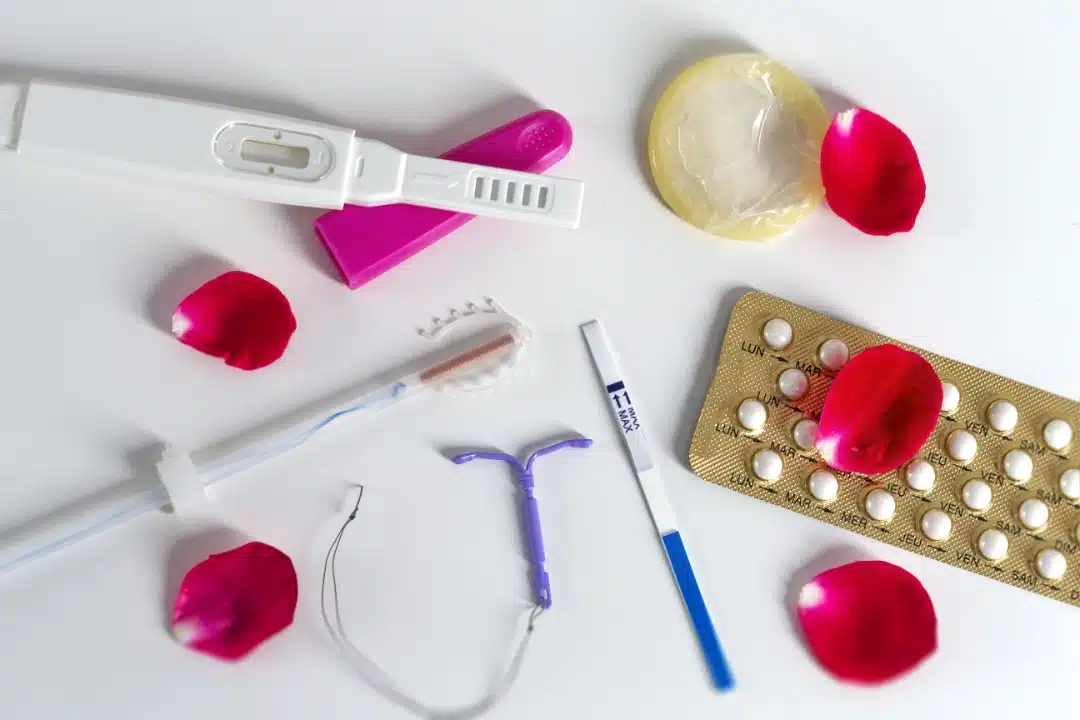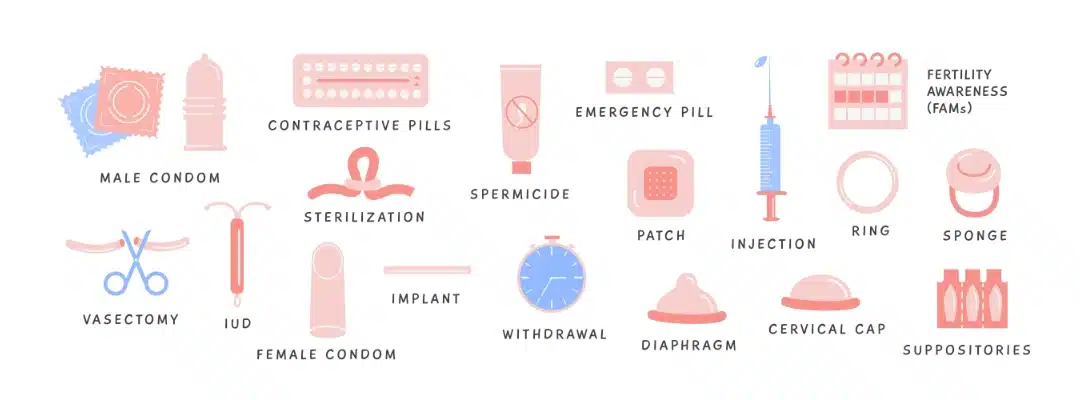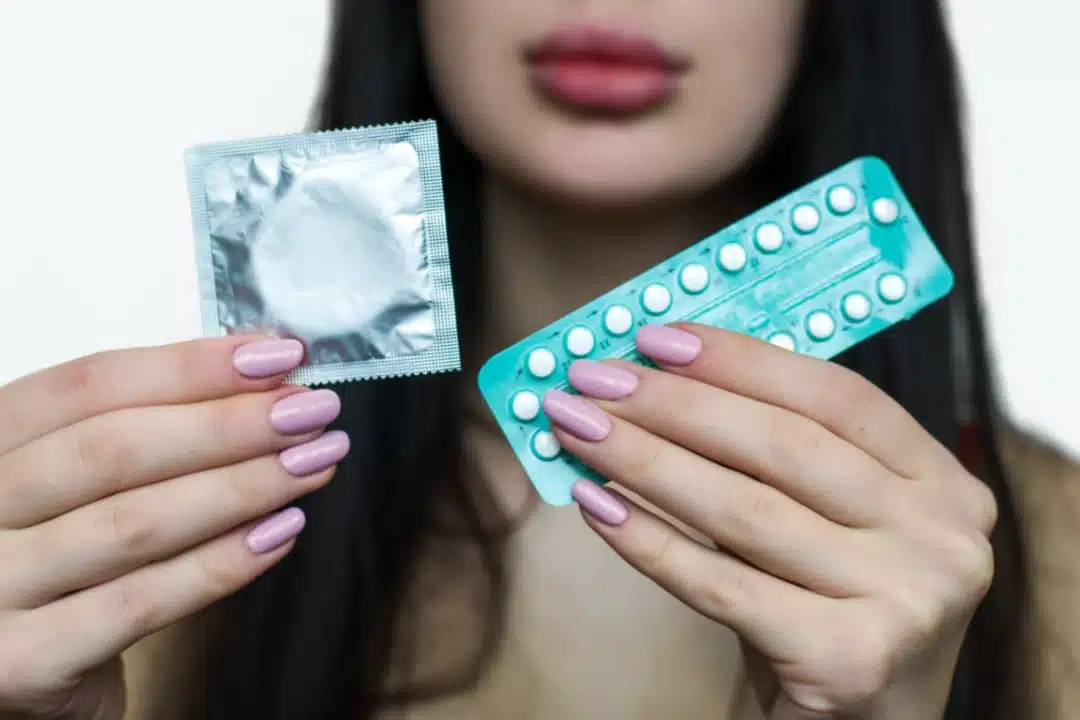
The myriad of birth control methods can sometimes prove confusing for many especially when considering different lifestyle factors. Contraception, commonly known as birth control, comes in various forms that are used to prevent unplanned or unwanted pregnancies. Before we learn about how birth control works, it is important to understand that birth control is only efficient when used properly, correctly, and consistently. A poor lapse of judgement may not only result in an unplanned or unwanted pregnancy but may also bring about a sexually transmitted infection (STI).
In this article, we will delve into:
There are many different types of birth control methods such as:
These rely on hormones to prevent pregnancy. Routes of administration vary and range from oral tablets, skin patches, vaginal rings, intramuscular injections, contraceptive implants (aka Implanon/Nexplanon), to intrauterine devices.
Types of hormonal birth control include:
Some of these methods also serve dual functions such as menstrual regulation and relief of menstrual symptoms which include menstrual cramps/heavy period flow, etc [2].
These methods prevent pregnancies without the use or interference of hormones.
Types of non-hormonal birth control include:

There are strengths and weaknesses for each birth control method. It is important to evaluate them to ensure you are making an informed decision.
| Birth control method | Effectiveness | Pros | Cons |
|---|---|---|---|
| Birth control pills | Perfect use: 99%
Typical use: 91% |
Oral administration
Helps in menstrual regulation, relief of menstrual cramps, and heavy flow
Short-term and no delay in the return of fertility after stopping |
Must be taken at the same time daily
Side effects include headaches, nausea, bloating, breast tenderness, etc. (usually improves after first few months) |
| IUCD/IUD | 99% | User independent; Mirena IUD also helps in the relief of menstrual cramps and heavy flow
Lasts for 5 years (but removable prior to that if keen for pregnancy, with no delay in the return of fertility) |
Invasive – needs to be placed inside the uterine cavity
Commonly results in erratic periods, and prolonged/unscheduled bleeding especially in the first 6 months Small risk of infection |
| Birth control patch | Perfect use: 99%
Typical use: 91% |
Skin patch administration
Helps in menstrual regulation, relief of menstrual cramps, and heavy flow
Short-term and no delay in the return of fertility after stopping |
Must be changed on a weekly basis
Side effects include skin irritation, headaches, nausea, bloating, breast tenderness, etc. (usually improves after first few months) |
| Birth control implant | 99% | User independent
Helps in the relief of menstrual cramps and heavy flow Lasts for 3 years (but removable prior to that if keen for pregnancy, with no delay in the return of fertility) |
Invasive – needs to be inserted underneath the skin
Commonly results in irregular periods and prolonged/unscheduled bleeding especially in the first 6 months |
| Birth control injections | Perfect use: 99%
Typical use: 94% |
User independent (during 3 months post-administration)
Helps in the relief of menstrual cramps and heavy flow |
Commonly results in irregular periods and prolonged/unscheduled bleeding
Delay in the return of period and fertility after cessation Associated with weight gain and decrease in bone mineral density |
| Condoms | Perfect use: 95%
Typical use: 70% |
No serious side effects
Widely available Helps protect against sexually transmitted infections (STIs) |
May slip off/break during intercourse
Penis must be withdrawn immediately after ejaculation |
| Vaginal ring | Perfect use: 99%
Typical use: 91% |
Helps in menstrual regulation, relief of menstrual cramps, and heavy flow
Short-term and no delay in the return of fertility after stopping |
Must be changed on a weekly basis
Side effects include vaginal discharge, headaches, nausea, bloating, breast tenderness, etc. (usually improves after first few months) |
| Spermicide | Perfect use: 80%
Typical use: 70% |
No severe side effects
Widely available |
Low efficacy when used alone
Usually needs to be combined with other methods e.g., condoms/diaphragm |
| Diaphragm | Perfect use: 95%
Typical use: 70% |
No severe side effects | Needs to be fitted correctly (every woman’s cervix is slightly different)
Must be combined with other methods e.g., spermicide |
| Fertility awareness/ Natural family planning | Perfect use: 99%
Typical use: 75% |
No severe side effect
Can be used for pregnancy planning |
Close tracking is needed to understand one’s body clock (at least a few months to learn) |
| Morning after pill | 98% (if administered within a certain timeframe) | Can be used as a last resort should one’s regular contraceptive method fail | Not suitable as regular/long-term contraception
Must be administered within a certain timeframe Side effects include nausea/vomiting, dizziness, unscheduled bleeding etc. |
| Abstinence | 100% | High effectiveness | May not suit everybody |
| Tubal ligation | 99.5% | Highest success rates in preventing pregnancy
Does not affect periods |
Invasive – requires day surgery with associated surgical/anaesthetic risks
Permanent/irreversible |
| Vasectomy | 99.8% | Highest success rates in preventing pregnancy | Invasive – requires day surgery with associated surgical/anaesthetic risks
Requires follow-up sperm test to show the absence of sperm in semen Permanent/irreversible |
These methods have varying effectiveness and different pros and cons when it comes to preventing pregnancy, however, not all birth control methods are created equal.
Of note, only barrier contraceptives can prevent pregnancies and sexually transmitted infections (STIs) – that means if you are on another form of birth control e.g., birth control pills and also wish to protect yourself against STIs, you should combine them with the use of condoms during every sexual encounter.

“So, what is the best birth control for me?” This answer will vary on a case-by-case basis. The decision will boil down to which factor you deem most important. In fact, your ideal birth control method may differ depending on which part of your life you are in.
There are several things to consider before deciding on the most effective birth control method, including:
Bear in mind that these factors must be considered in relation to your lifestyle and whether you are able to commit to the responsibilities necessary for the birth control method to be effective.
| Factors | Birth control method |
|---|---|
| Comfort: “I want birth control that doesn’t impede my sexual experience. I also have a monogamous relationship and sex is an important aspect of our relationship.” |
Birth control pills
Birth control patch/skin patch Vaginal ring IUCD (Mirena or copper) Contraception implant (Implanon/Nexplanon) Surgery (tubal ligation/vasectomy) |
| Lifespan:
“I want a contraceptive that lasts long and requires minimum management.” |
IUCD (Mirena or copper) – 5 years
Contraception implant (Implanon/Nexplanon) – 3 years Surgery (tubal ligation/vasectomy) – forever Abstinence – as long as you can manage |
| Affordability:
“I want a contraceptive that is cheap and will still keep me safe.” |
Condoms
Diaphragm + spermicide Fertility awareness/natural family planning Abstinence |
| Protection against STI:
“I want a contraceptive that prevents pregnancy and protects me from STIs as I have multiple partners.” |
Condoms |
| Convenience:
“I want a birth control method that doesn’t involve visiting a health care provider.” |
Condoms
Abstinence Fertility awareness/natural family planning |
| Side effects:
“I want a birth control method that doesn’t affect my hormonal cycle.” |
Non-hormonal methods of contraception |
No. The pull-out method, also known as the withdrawal method or coitus interruptus, involves pulling the penis out before ejaculation occurs. It is not an effective form of birth control as sperm exists in pre-ejaculate [3,4]. Pre-ejaculate is released during arousal and may contain sperm due to previous sessions of ejaculation. This sperm can still result in pregnancy, in fact, statistics have shown that 1 in 5 couples who use the pull-out method will still end up falling pregnant [5].

There are two main types of birth control pills in Singapore, these are prescription-only and include the following:
In general, if you are thinking about going on contraception, do make an appointment to see an obstetrician who will be able to tailor and individualise your birth control options according to your needs – there is no one-size-fits-all.